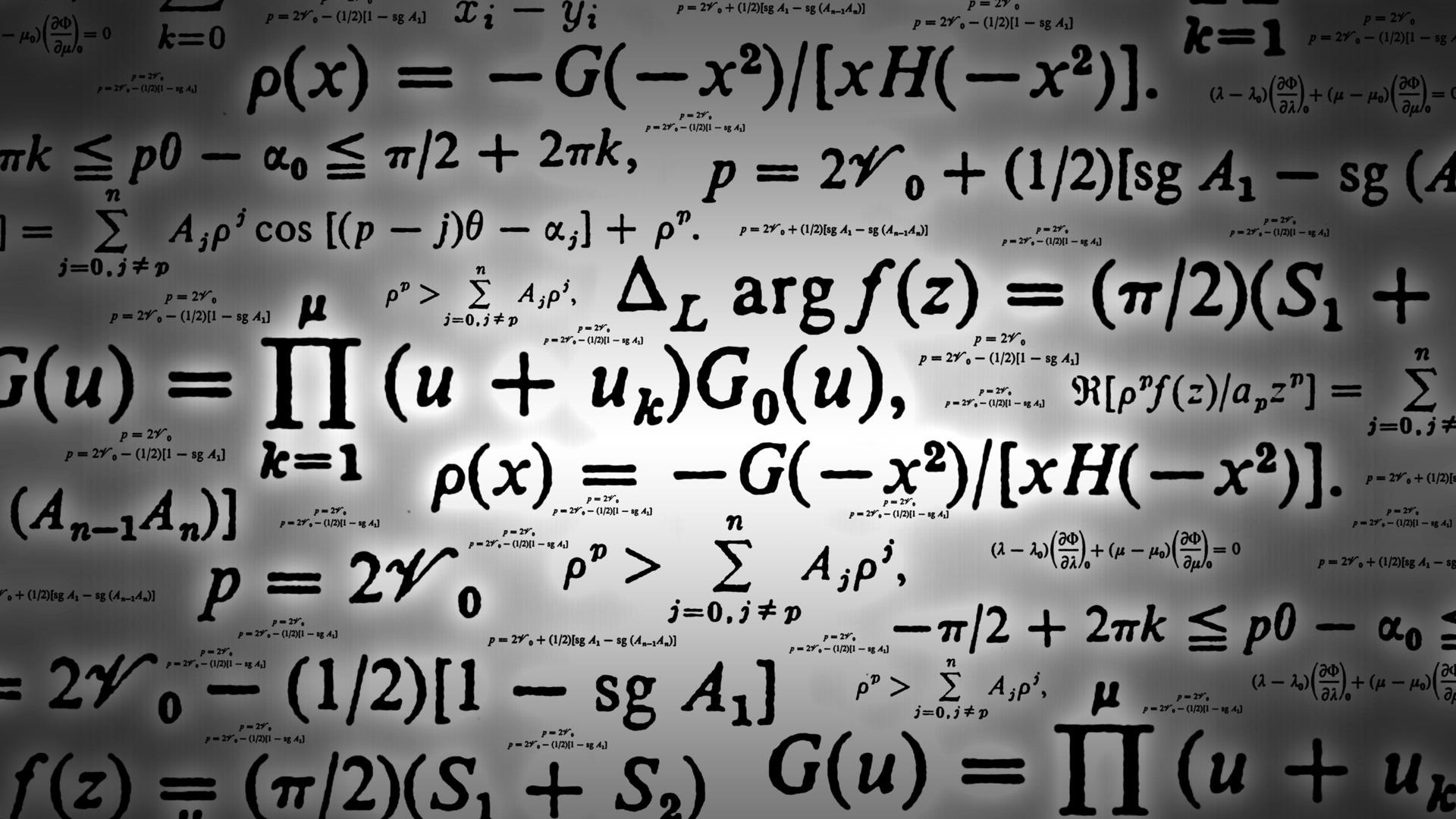Maths is everywhere. We see units of measurement on our food and drink labels. We use ratios and proportions when we cook. Our clothing and shoes are sized by the centimetres they represent.
We might call those 'passive' maths. 'Active' maths would then be managing our budget, calculating a 15% tip and estimating how much paint you need for two coats on your walls.
Whether you're planning on a maths-intensive career or just want to be financially literate, you need math skills. Not the kind that you whip out a calculator for but the kind you can do in your head. Being able to do quick mental arithmetic while out shopping means you will always get the best deals (and steer clear of pricing scams!).
Mathematics is a life skill that everyone needs to be fluent in. You may love, hate or fear maths but that doesn't matter, at least not when it comes to improving arithmetic skills.
Read on to find out why, and how you too can become a champion of mental maths.

Why Learn How to Calculate Maths Fast in Mind?
As noted in this article's introduction, people use mental arithmetic all the time and in all types of situations. You might not work out the family budget in your head but you'll surely use mental maths while doing your weekly shop, for example. You can also use math tricks while cooking, sewing and any other activity you might pursue.
Doing math in your head changes the way you think. Math is an exercise in logic and consistency. Once you start reasoning along mathematical lines, you begin to realise how much 'noise' surrounds every decision you make.
You'll see the value of paring away excess variables and functions that play no role in the situation at hand to arrive at the simplest, most logical conclusions.
Besides changing your way of thinking, mental arithmetic can sharpen your cognitive skills and improve your memory. As you age, practising mental arithmetic can help to keep your brain functioning at its best. These brain exercises help to beat conditions like anxiety, panic attacks, and worse: dementia and Alzheimer's. However, doing so requires time and a personal commitment.
Does Fast Calculation Come Easier When You're Young?
One might argue that any type of learning is easier for youths but you're never too old to polish up old skills or develop new ones. Your brain never stops changing; that's the definition of neuroplasticity. You only need to stimulate the area of the brain concerned to absorb, retain and use maths. Or recall the maths you knew long ago.
The idea that only children's brains change and grow has long been debunked, These days, middle-agers and senior citizens enjoy learning languages, new sports (the insane pickleball craze!) and new hobbies.
So no matter what your age, follow these maths tips to start building your brain's new neural connections.

How To Improve Arithmetic Skills: Quick Tips
Mental arithmetic practice has to be regular. You don't need to plan on a daily formal session; around 10 minutes per day should be enough, to start. You might recite multiplication tables as you shower, for example. Or you could challenge your logic and reasoning skills with a Sudoku puzzle while you enjoy a cup of tea.
If you're not sure where to start, you might invest in a few sessions with a maths tutor. Explain to them that you want to increase your maths ability and your brain's agility. Emphasise that you're interested in building mental math skills. Your lessons would revolve around logic puzzles, word problems and other activities like:
- Addition tricks and multiplication tables,
- Knowledge of the complements of the number 10,
- How to calculate percentages
- When and how to move decimals
- Dividing by a number is the same as multiplying by its reciprocal (dividing by 0.25 is the same as multiplying by 4, e.g.)
- Learning the rules of factorisation (1, 7, 5 and 35 are factors of 35, for instance)
- Knowledge of the orders of magnitude for Pi (3.14159) and Phi (the Golden Ratio - 1.618), for example.
However, sessions with a tutor won't be enough. To improve your maths level, use your newly-gained skills every chance you get. That means adding and subtracting (up to) three-digit numbers without a calculator, figuring out percentages and other basic maths exercises.
How to Calculate Maths Fast in Mind: an In-Depth Look
Depending on your aptitude, how hard you work and how dedicated you are to the task, you could find yourself deleting your phone's calculator app within weeks of starting your maths workouts. You'll likely have to start the old-fashioned way: with a notebook and pencil.
In fact, writing out math facts by hand is one of the top tips to help with maths skills-building.
Set Your Problem Out On Paper
Some people find it easier to tackle a calculation or problem when they can see it on paper. Don't get discouraged at the time it takes you to scribble things down and figure them out. This slow phase lasts only a little while.
Once you can visualise what you want to calculate, you'll build up speed. Soon, you'll be able to see math problems with your mind's eye and figure them out lightning fast, no pencil or paper needed.

Approximation Is Your Friend
Mental math helps you build spatial skills, too. As you become increasingly math-fluent, you'll be able to estimate a math question's answer without working it out. This ability goes even further.
Preparing a feast with my friend, I was dismayed that they never measured any ingredients. "But you have to use exactly (this amount)!" I cried. They tipped the glass of liquid they held into a measuring cup to prove their estimate was just a few drops shy of the required amount.
My maths-loving friend had developed skills such that they could eyeball the needed amount of liquid without measuring it.
By working out roughly what a figure should be, you can work it out with more confidence. As my maths tutor Sydney says, you don't have to be a math whiz to estimate an answer. You just have to be confident in your ability to reason.
Turn Numbers Into Shapes Or Objects
Most people believe that math is all about the numbers but that's not true. Math is all about logic and reasoning; numbers are merely symbols to express value. If you're numbers averse, you might try instead to use other symbols.
For example, you might visualise single digits as visual blocks. For more advanced calculations, think of the different parts of the problem as building blocks. Even allocating a picture in your head to the sets of numbers can change the way you approach that group of digits.
You may find using Chinese numbers helpful. In China, people use Arabic numerals (1, 2, 3, 4 and so on) as well as their own numbers (一, 二, 三, 四 and so on). People with dyslexia/dyscalculia and those with learning difficulties find it easier to work with these symbols than the standard numbers we use every day.
You might find a Chinese numbering chart online or, better yet, an online Maths tutor to help you get familiar with this numbering system.

Calculating Percentages
It seems like percentages are everywhere we spend our money. You might tip at a restaurant or head to the shops to take advantage of the sales. You just found a great bag that's 40% off; how much will you pay for it? First, look at the bag's price: $73.99.
Slide the decimal one number to the left to calculate ten per cent: 7.39; we'll round it up to 7.40. Multiply that 10% value by 4 (7.40 x 4) to get 29.60, which represents 40%. For the next step, subtract the answer you just calculated from the original sale price (73.99 - 29.60). Check your wallet for the needed $44.39 and the bag is yours!
Fortunately, most rebates are multiples of ten so this method is a good way to estimate discounts. Of course, you needn't work that hard if the item you want is 25%, 50% or 75% off. For those price tags, you only have to divide by 2 (for 50%) or 4 (for 25% and 75%). These tricks come courtesy of an excellent maths tutor Brisbane.
Butterfly Fractions
Percentages and fractions are supposedly two of mental maths' most difficult challenges. But as we've just seen, percentages boil down to simple arithmetic. So do fractions.
Adding and subtracting fractions requires a common denominator. It's easy to find if you know factors and multiplication tables but it's a bit more challenging if the numbers have no factors in common.
In that case, simply multiply the denominators.
Now, you must figure out what to do with the numerators; another easy task. Simply multiply the first fraction's denominator with the second fraction's numerator. Repeat the denominator x numerator process for the other pair. Add them together to get your answer.
With a bit of training, you can do all this math in your head. If you live in Western Australia, you might find a maths tutor Perth to help you build speed and accuracy in fraction-solving.















